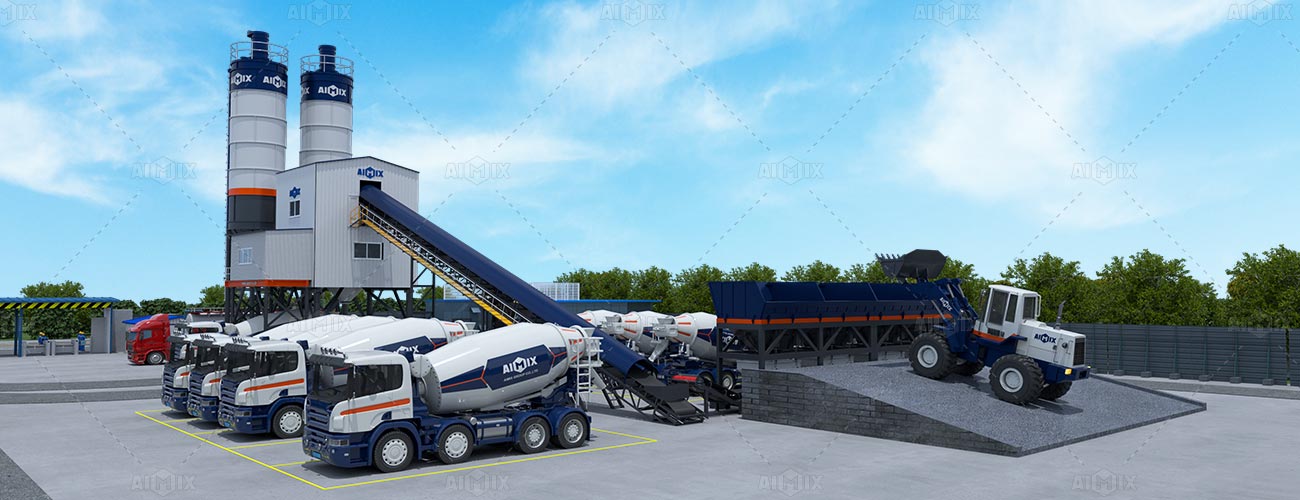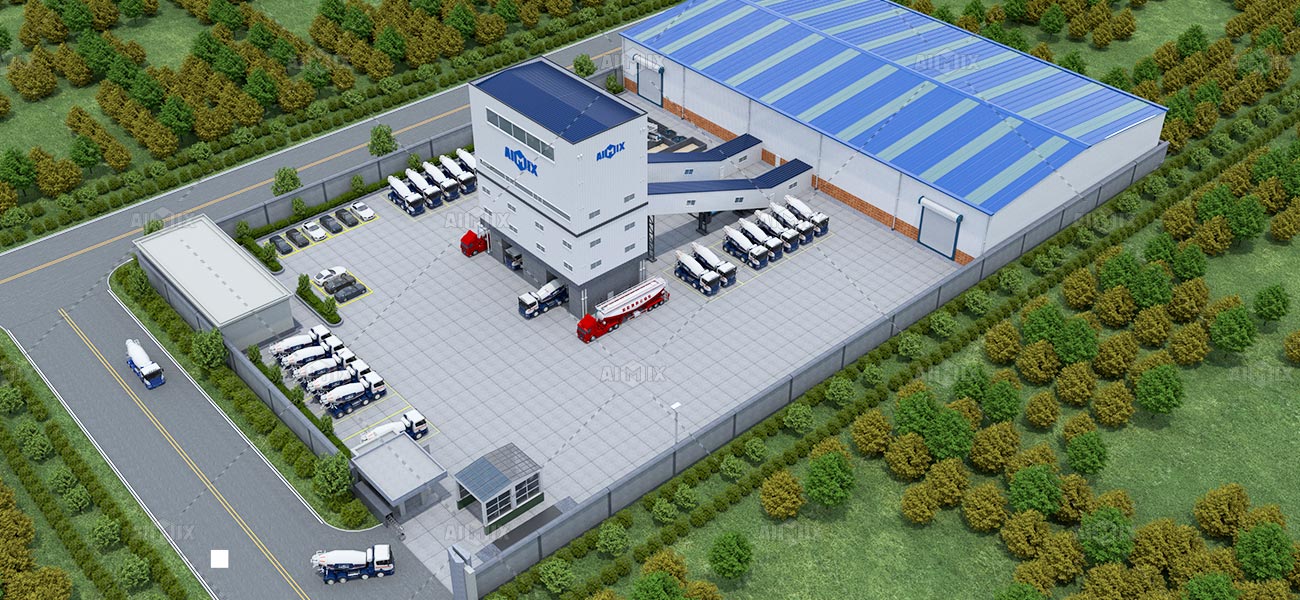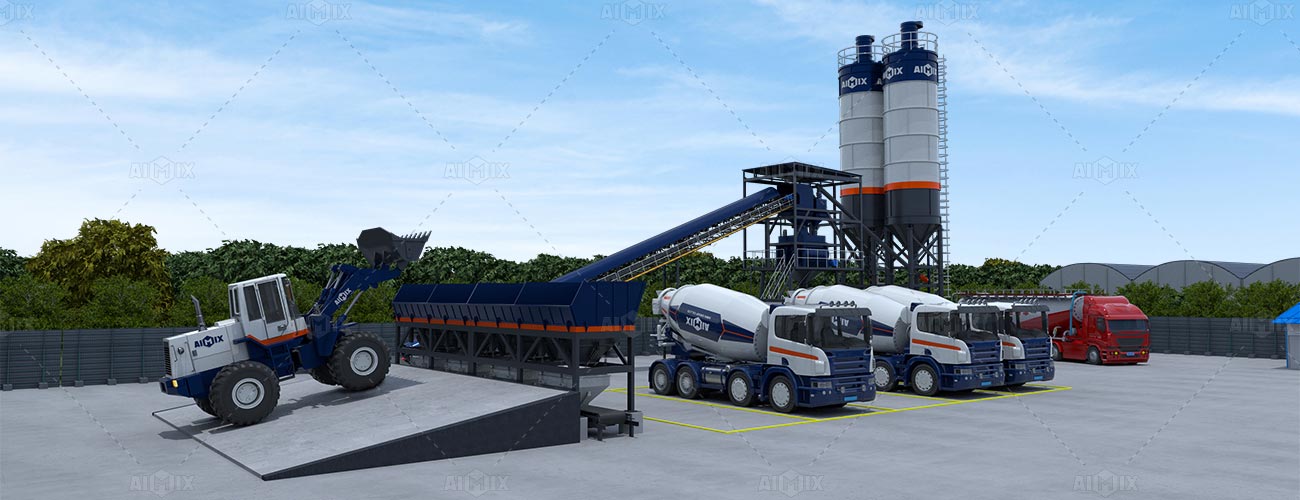As the global construction industry continues to grow, so does its environmental footprint. One of the key components in construction is concrete, and the production of concrete has a significant impact on the environment. Ready mix concrete plants, which produce concrete specifically for construction projects, play a critical role in this industry. However, the environmental concerns associated with concrete production, such as carbon emissions, resource consumption, and waste generation, have prompted the need for more sustainable practices. This article explores the green innovations in ready mix concrete plants that are helping to move the industry toward a more sustainable future.

The Environmental Impact of Concrete Production
Concrete is the most widely used construction material in the world, and its production is a major contributor to environmental degradation. The process of manufacturing cement, the primary ingredient in concrete, accounts for approximately 8% of global carbon dioxide (CO2) emissions. Additionally, concrete production consumes large amounts of natural resources, including water and aggregates like sand and gravel. The extraction of these materials can lead to habitat destruction, soil erosion, and water pollution.
Ready mix concrete plants, which produce concrete that is delivered to construction sites ready for use, also generate significant amounts of waste, including excess concrete and wastewater. Managing this waste is a critical challenge for the industry, as improper disposal can harm the environment.
Given these environmental concerns, there is a growing demand for more sustainable practices in ready-mix concrete production. Fortunately, technological advancements and innovative practices are paving the way for greener, more efficient, and more environmentally friendly concrete batching plants.

Reducing Carbon Emissions with Low-Carbon Concrete
One of the most significant green innovations in ready mix concrete plants is the development and use of low-carbon concrete. Traditional concrete production is highly carbon-intensive due to the energy required to produce cement. However, advancements in materials science have led to the creation of alternative cementitious materials that have a lower carbon footprint.
For example, the use of supplementary cementitious materials (SCMs) such as fly ash, slag, and silica fume can partially replace Portland cement in concrete mixes. These materials are by-products of industrial processes and can significantly reduce the carbon emissions associated with concrete production. Additionally, some ready mix concrete plants are experimenting with carbon capture and storage (CCS) technologies, which capture CO2 emissions during cement production and store them underground, preventing them from entering the atmosphere.
Another promising innovation is the use of carbon dioxide mineralization, a process in which CO2 is injected into concrete during mixing. The CO2 reacts with calcium ions in the concrete to form calcium carbonate, which strengthens the concrete while permanently sequestering the carbon. This not only reduces the carbon footprint of the concrete but also improves its durability.
Water Conservation and Recycling
Water is a critical resource in concrete production, used both in the mix and for cleaning equipment. However, water scarcity is a growing concern in many parts of the world, making water conservation a priority for ready mix concrete plants.
Innovative water management practices are being implemented to reduce water consumption and promote recycling. For instance, many plants are now using advanced filtration systems to treat and recycle wastewater generated during the concrete production process. This treated water can then be reused in the mixing process, reducing the overall water demand.
Additionally, some plants are adopting rainwater harvesting systems, which collect and store rainwater for use in concrete production. This reduces the reliance on freshwater sources and helps to mitigate the environmental impact of water extraction. AIMIX GROUP has been in concrete plant business for many years and have provided various ready mix batching plants for wide range of contruction projects, if you are interested in knowing more about the plants, and you can check for Aimix batch plants.

Efficient Use of Aggregates and Alternative Materials
The extraction and processing of natural aggregates like sand and gravel have significant environmental consequences, including habitat destruction and resource depletion. To address this, ready mix concrete plants are increasingly turning to alternative materials and more efficient use of aggregates.
One approach is the use of recycled aggregates, which are derived from demolished concrete structures. By crushing and processing old concrete, ready mix plants can produce high-quality aggregates that can be used in new concrete mixes. This not only reduces the demand for virgin aggregates but also helps to minimize the waste generated by construction and demolition activities.
Another innovation is the use of lightweight aggregates made from industrial by-products such as expanded shale, clay, and slate. These materials are not only more sustainable but also improve the thermal insulation properties of concrete, making it more energy-efficient.
Energy Efficiency and Renewable Energy Integration
Energy consumption is another critical aspect of concrete production, with ready-mix plants relying heavily on electricity for operations. To reduce their environmental impact, many plants are adopting energy-efficient technologies and integrating renewable energy sources into their operations.
For example, variable frequency drives (VFDs) are being used to optimize the energy consumption of motors and pumps in ready mix plants. These drives adjust the speed of the equipment based on demand, reducing energy waste and lowering operational costs.
In addition, some ready mix concrete plants are installing solar panels or wind turbines to generate renewable energy on-site. This not only reduces the carbon footprint of the concrete plant but also provides a sustainable energy source that can help offset energy costs over time.
Waste Reduction and Recycling Initiatives
Waste generation is a significant challenge for ready mix concrete plants, particularly in the form of excess concrete and wash water. However, innovative waste reduction and recycling initiatives are helping to minimize this impact.
One such initiative is the use of concrete reclaimer systems, which separate and recycle unused concrete. These systems crush and process the leftover concrete, allowing the aggregates and cement paste to be reused in new batches of concrete. This reduces the amount of waste sent to landfills and conserves valuable resources.
Additionally, some plants are implementing closed-loop water recycling systems, which treat and reuse wash water from the cleaning of equipment and trucks. This not only reduces water consumption but also prevents the discharge of contaminated water into the environment.
The Future of Sustainable Ready-Mix Concrete Plants
The green innovations in ready mix concrete plants are a testament to the industry’s commitment to sustainability. As these technologies and practices continue to evolve, they will play a crucial role in reducing the environmental impact of concrete production and helping to build a more sustainable future.
Looking ahead, the adoption of digital technologies such as artificial intelligence (AI) and the Internet of Things (IoT) is expected to further enhance the efficiency and sustainability of ready mix concrete plants. These technologies can optimize production processes, monitor environmental impact in real-time, and ensure that resources are used as efficiently as possible.
Moreover, the integration of green building certifications and standards, such as LEED (Leadership in Energy and Environmental Design) and BREEAM (Building Research Establishment Environmental Assessment Method), will drive the demand for sustainable concrete products, encouraging more ready mix plants to adopt eco-friendly practices.
Conclusion
Green innovations in ready mix concrete plants are transforming the construction industry by reducing carbon emissions, conserving resources, and minimizing waste. Through the adoption of low-carbon concrete, water recycling, efficient use of aggregates, and renewable energy, these plants are leading the way toward a more sustainable future. As the industry continues to evolve, the integration of digital technologies and adherence to green building standards will further enhance the sustainability of ready-mix concrete production, helping to build a better world for future generations.
